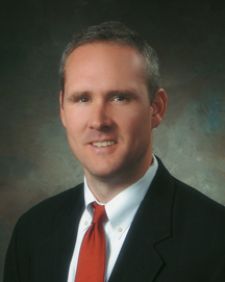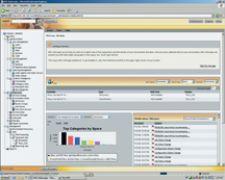
EMC's ILM software is designed to discover information, assess and identify its importance and execute predefined ILM policies.
As the saying goes, “if we build it, they will come.” That is, assuming we live in a perfect world made of baseball, hot dogs and apple pie. In today’s competitive climate, a physician cannot afford the risk of following such a credo. A successful practice requires forethought, forward thinking and proactive action to sustain profitable numbers. One cannot adopt a passive stance and assume patients will just flock to your door. Those days are long gone…if they really ever existed.
Attracting potential patients and a pool of referring physicians means setting realistic and measurable goals. You need to know who you are, what you provide and what makes you better. Simply put, you need to plan your work and work your plan.
In the healthcare industry, health is one of the words that often gets lost in the fray. To be successful, a physician practice must be healthy. That means following a rigorous regimen that promotes the viability of the practice. This is done through effective management, fierce inward analysis and strategic planning.
Part of the strategic planning is done by utilizing information efficiently. The medical community is a data intensive environment that has to be effectively managed, archived and protected as mandated by federal law. Data needs to be highly refined through effective data mining, as this practice analysis tool can reduce costs and increase revenues. Freestanding radiology centers have been some of the first to adopt data mining to grow their business model.
Know When Information is Important to You
Growth is a measured process. Physician practices as well as imaging centers need to have measurable results. They have to have enough information and indicators to sustain incremental growth. But, it is important to know what to measure and when. Evaluating too many variables can be redundant, self-defeating and waste valuable time.
Value-added service is a component in everything business does today. The world demands it. To sustain measurable gains, a medical practice cannot just offer a quality service, but one that stands apart from the rest and provides a value-added benefit to patients, referring physicians and the community.
It comes down to some marketing and management basics. A viable practice requires an accurate way to monitor and achieve the best return on investment (ROI). Today’s medical organization has challenges that can usurp all of those objectives. It must weather corporate competition, stringent government regulations, managed care, capitated payment and liability issues. A physician needs to know his or her niche market, and where the practice fits within that area. It is necessary to identify all strengths and limitations and fashion a plan that will guarantee that added edge. Data mining is essential to fashion this strategy.
Without a dynamic marketing plan, there cannot be identifiable results. A practice can run amuck without knowing where to head and where to focus. Clinicians must engage in a fierce evaluation of the practice’s intrinsic value. This means adopting a direction that effectively tracks results and all elements inherent in the practice.
Merge eMed, a division of Merge Healthcare with corporate headquarters in Milwaukee, WI, is one particular firm that provides best-of-breed technology solutions to help medical practices effectively manage, analyze and promote their business. Medical and imaging centers nationwide use the firm’s Practice Analysis engine, a data mining and analytics solution that is bundled into the firm’s Fusion RIS system. Fusion RIS is a HIPAA-supportive radiology information technology (IT) tool that manages information and maximizes productivity in radiology practices. The Fusion RIS Practice Analysis module is an interactive tool for data mining that helps clinicians build their practice, while managing vital patient-specific information and business trends. Merge eMed also offers Fusion Matrix PACS and will be showcasing its Fusion RIS/PACS MX at RSNA, a unified, intelligent, distributed business and clinical workflow solution that unifies RIS, PACS, embedded dictation, embedded document management and Web-based distribution of clinical and business information and billing/practice analysis workflow.
A successful practice must adopt an efficient practice analysis – one that adds value and does not detract from the objectives at hand. Merge eMed President Robert White says a successful practice knows how to manage data and identify appropriate targets.
“Good strategy and good business modeling starts and ends with the customer set you want to serve,” said White. “That includes not only the referring physician who will generate the demand for your center, but also the patient experience.”
"In today’s competitive environment, winners figure out how to leverage data to create information," said White. That is especially true with multimodality centers centers that are serving a wide-variety of client needs.
“It is about unlocking the value of data that exists within your practice and turn that into information that enables you to differentiate your and turning the technology into data that helps you run your business sector,” said White. “Many facilities see opportunities by offering diversity to the community and being one-stop shops for physicians. Once you become an easy company to do business with for your constituents (physicians, patients,), then you have the ability to secure long term relationships. Information-based solutions can play an important role in helping a practice become the “best choice” by providing insights on emerging customer requirements.”
A Profitable Practice Uses Technology to its Advantage
Over 70 percent of physicians who participated in a 2000 survey conducted by the Healthcare Information and Management Systems Society said they were concerned about improving operating efficiencies. But, many surveyed in 2004, admitted they weren’t maximizing their IT advantage. Only 68 percent of providers said they were fully HIPAA compliant. Half of the medical facilities said their information management systems were capable of producing many transactions, but the transactions were not being performed because their strategic partners were unable to accept or transmit them.
Effective information management technology is workflow integrated and mutually streamlined. It is manageable, accessible and transparent to all constituents involved in practice management. The technology solution must integrate well into the workflow of how physicians work and how the imaging center or practice wants to operate. Effective information is obtainable in real time. It must provide a throughput, allowing the practice to monitor all elements from the initial patient appointment to the final bill at any given time. Quality must be measurable to ensure future referrals. Reimbursement schedules must be monitored to ensure profitability.
IT and good strategic planning improves productivity of all personnel, increases profitability and maximizes patient flow, with efficient billing and collections.
White says many things can impact a practice. Data mining and analytics software is a mitigating factor that can identify issues and provide a template for improvement. He has outlined a ten-point plan that medical practices and imaging centers can use to ensure better business, efficiency and more satisfaction using Fusion Practice Analysis. This includes:
1. Measuring the true trends that impact the number of chargeable exams
2. Effective time analysis to maximize the number of patients seen
3. Analyzing referring physician trends
4. Analyzing referrals by market or geographic segment
5. Analyzing workforce performance
6. Measuring the output of the practice by evaluating productivity
7. Monitoring the number of unfinished exams
8. Tracking receivables and reimbursement schedules
9. Tracking total patient times and streamlining workflow
10. Tracking the time it takes to get a report back to the referring physician
Poor Document Management Can Be Costly
Many medical practices are unable to effectively track their data. They have it, they file it. They don’t know how to maximize it. How do they retrieve a file when there is a specific question or legal request? That is a big concern. HIPAA and other federal regulations mandate effective information management. Compliance is crucial to an organization’s survival. Time is of the essence if there is an audit or data is requested within a specific timeframe. Failure to do so results in fines.
This is a pervasive problem that affects a large segment of the medical industry. It may be surprising to learn that 80 percent of archived data in a medical practice is unmanaged. Many practices lack the proper benchmarking tools to effectively track aging accounts or even fully identify what types of files they have. IT inadequacies are cited as an ongoing problem at many facilities. Information is either under-utilized or irretrievable by a certain type of search, or it is over-managed, wasting time and raising overhead.
Effective data mining gives physician clinics a strategic edge when dealing with difficult payers. It serves as a quality control buffer for billing staff to ensure timely payments and reduced coding errors. Without a good IT initiative, today’s practices are effectively dead in the water.
Today’s Management Imperative
A practice has to harness an effective marketing model, but organize data effectively. That is done by purchasing technology that can pattern match through the entire enterprise. Practice managers need to be able to classify data within the file servers and file shares and classify file attributes based on who owns it. It must be compatible from the IT department all the way through to the front office.
The real key to intelligent information management is harnessing unstructured data and unlocking the value of what it is saying. Business-critical information needs to be easily identifiable with the appropriate storage, retention and access policies. Technology allows a practice to monitor all factors that impact an organization. It gives the practice manager the ability to address a problem and solve it, by inputting data and analyzing what occurred. This makes everyone happy, from the corporate CEO to the legal department. Effective IT is the only way to survive in today’s changing medical environment. Without it, failure is an absolute.




 November 12, 2025
November 12, 2025 









